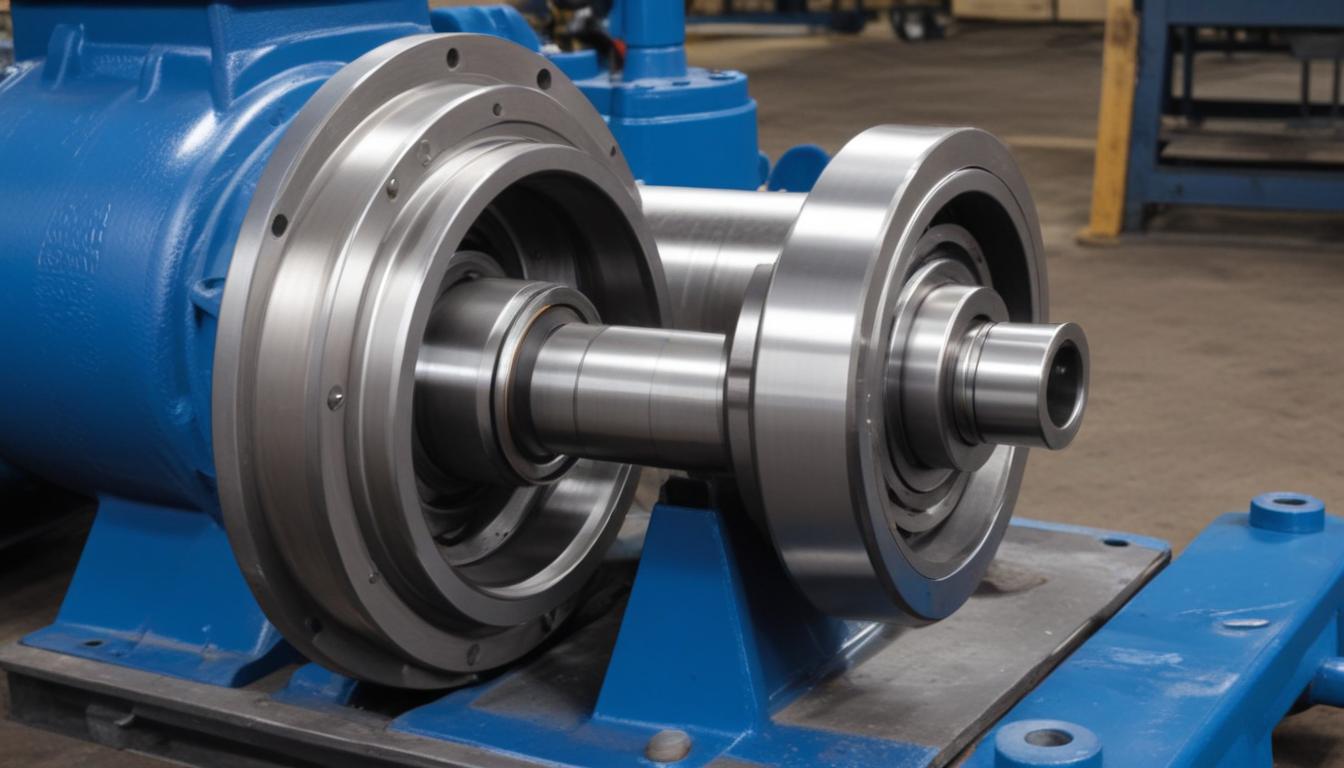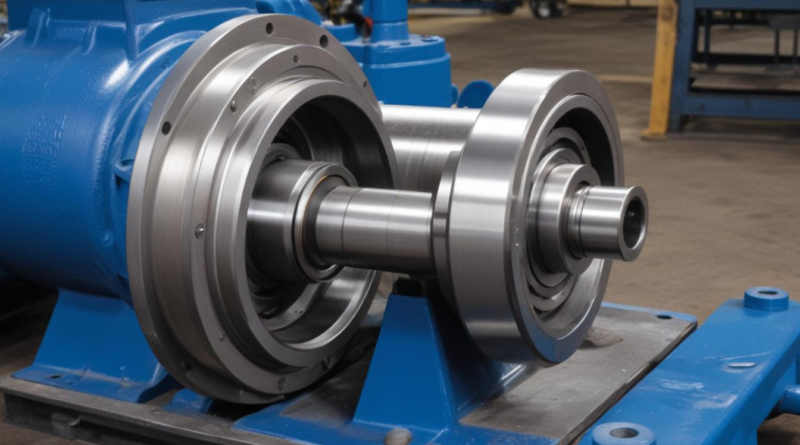how to prevent pump bearing failure
Proper lubrication is critical in failure prevention for pump bearings, ensuring smooth operation and extending their lifespan. Effective lubrication minimizes friction and wear, protects against corrosion, and helps dissipate heat generated during operation. To achieve optimal results, consider the following best practices:
- Select the Right Lubricant: Use lubricants that are specifically formulated for pump applications. Factors such as load, speed, and operating environment should guide your selection.
- Maintain Correct Lubricant Levels: Regularly check and replenish lubricant levels to prevent both over-lubrication and under-lubrication, each of which can lead to bearing damage.
- Implement a Lubrication Schedule: Establish and adhere to a maintenance schedule that outlines lubrication intervals based on manufacturer recommendations and operating conditions.
- Monitor Lubricant Quality: Periodically assess the condition of the lubricant for contaminants, viscosity changes, and degradation, replacing it as necessary to maintain effectiveness.
- Use Automated Lubrication Systems: Where feasible, install automated systems to ensure consistent and accurate lubrication, reducing the risk of human error.
| Type of Lubricant | Application | Advantages |
|---|---|---|
| Mineral Oils | General-purpose pump bearings | Cost-effective, widely available |
| Synthetic Oils | High-temperature or high-speed applications | Enhanced thermal stability, better performance under extreme conditions |
| Greases | Sealed bearings or environments with limited access | Long-lasting, provides effective protection against contaminants |
Implementing these lubrication strategies as part of a comprehensive maintenance program not only safeguards pump bearings from premature failure but also enhances overall system reliability and efficiency.
regular maintenance checks
Regular maintenance checks are essential for ensuring the longevity and reliability of pump bearings. By systematically inspecting and servicing pump components, potential issues can be identified and addressed before they escalate into significant problems. Implementing a structured maintenance routine contributes significantly to failure prevention and optimizes the overall performance of the pumping system. Key aspects of regular maintenance include:
- Visual Inspections: Conduct routine visual examinations of pump bearings and surrounding components to detect signs of wear, corrosion, or damage. Look for leaks, discoloration, or any unusual markings that may indicate underlying issues.
- Cleaning: Keep pump bearings and associated parts clean from dirt, debris, and contaminants. Regular cleaning helps prevent abrasive particles from causing wear and ensures that lubrication remains effective.
- Lubricant Assessment: Evaluate the condition and quantity of lubricants. Check for signs of contamination, degradation, or insufficient lubrication, and replenish or replace lubricants as necessary to maintain optimal performance.
- Tightening and Securing: Ensure that all bolts, nuts, and fasteners are properly tightened and secured. Vibration and operational stresses can cause components to loosen over time, potentially leading to misalignment or mechanical failure.
- Component Replacement: Identify and replace worn or damaged parts promptly. Timely replacement of components such as seals, gaskets, and bearings prevents minor issues from developing into major failures.
Implementing a comprehensive maintenance checklist can streamline these processes and ensure that no critical steps are overlooked. Below is an example of a maintenance schedule tailored for pump bearings:
| Maintenance Task | Frequency | Details |
|---|---|---|
| Visual Inspection | Weekly | Check for visible signs of wear, leaks, and proper alignment. |
| Lubricant Check | Monthly | Assess lubricant levels and quality, replenish or replace as needed. |
| Cleaning | Monthly | Remove contaminants and debris from bearings and surrounding areas. |
| Tightening Fasteners | Quarterly | Ensure all bolts and nuts are securely fastened to prevent loosening. |
| Comprehensive Inspection | Annually | Perform detailed examinations, including vibration analysis and thermal imaging. |
Utilizing maintenance management software can enhance the efficiency of these checks by automating scheduling, tracking maintenance activities, and generating reports. Additionally, training maintenance personnel on best practices and the importance of regular checks fosters a proactive maintenance culture, further reducing the risk of pump bearing failure.
By adhering to a disciplined maintenance regimen, organizations can achieve significant improvements in pump reliability, reduce downtime, and extend the operational lifespan of their pumping systems.
monitor vibration levels
Monitoring vibration levels is a crucial aspect of ensuring the health and longevity of pump bearings. Vibration analysis serves as an effective failure prevention tool by detecting early signs of wear, misalignment, imbalance, and other issues that could lead to catastrophic failures if left unaddressed. Implementing a systematic approach to vibration monitoring can significantly enhance the reliability of pumping systems. Key components of an effective vibration monitoring program include:
- Baseline Establishment: Begin by recording the normal vibration levels of the pump system under standard operating conditions. This baseline data serves as a reference point for future comparisons and helps in identifying deviations that may indicate potential problems.
- Regular Vibration Measurements: Schedule periodic vibration assessments using appropriate sensors and measurement tools. Consistent data collection allows for trend analysis and the timely detection of abnormal vibrations.
- Frequency Analysis: Analyze the frequency spectrum of the vibration signals to identify specific patterns associated with different types of bearing faults, such as outer race defects, inner race defects, ball defects, and cage issues.
- Amplitude Monitoring: Track the amplitude of vibrations, as increasing levels can signify worsening conditions. Sudden spikes in vibration amplitude may indicate immediate issues requiring prompt attention.
- Phase Analysis: Examine the phase relationship between different vibration axes to detect misalignment or unbalance in the pump assembly. Phase discrepancies can provide insights into the root causes of vibration anomalies.
- Data Logging and Trend Analysis: Utilize data logging systems to record vibration data over time. Trend analysis helps in predicting potential failures by observing gradual changes and identifying patterns that precede bearing degradation.
- Alarm Thresholds: Set predefined vibration thresholds that trigger alerts when exceeded. These thresholds should be based on the baseline measurements and the criticality of the pump application, enabling timely interventions before severe damage occurs.
Implementing these practices requires the use of specialized vibration analysis equipment and software capable of capturing and interpreting complex vibration data. Below is an example of common vibration parameters and their significance in pump bearing monitoring:
| Vibration Parameter | Description | Indicates |
|---|---|---|
| Acceleration | Measures the rate of change of velocity of the vibrating object. | Higher acceleration levels can indicate severe imbalance or excessive loading. |
| Velocity | Measures the speed at which the object is vibrating. | Used to assess overall machine condition; elevated levels may suggest bearing defects. |
| Displacement | Measures the movement range of the vibrating object. | Useful for identifying low-frequency issues such as misalignment or foundation problems. |
| Frequency | Determines the number of vibrations per second. | Helps in diagnosing specific bearing faults based on characteristic frequencies. |
Incorporating advanced technologies such as wireless sensors and real-time monitoring systems can further enhance the effectiveness of vibration monitoring programs. These technologies provide continuous data collection and immediate analysis, enabling swift decision-making and reducing the reliance on manual inspections.
Training maintenance personnel in vibration analysis techniques and interpreting vibration data is essential for maximizing the benefits of this approach. A well-trained team can accurately diagnose issues, prioritize maintenance activities, and implement corrective measures that prevent pump bearing failures.
By diligently monitoring vibration levels and acting on the insights gained, organizations can achieve significant improvements in pump reliability, minimize unplanned downtime, and extend the operational lifespan of their pumping systems.
ensure proper alignment
 Proper alignment of pump components is essential in failure prevention for pump bearings. Misalignment can lead to uneven load distribution, increased friction, and accelerated wear, ultimately resulting in premature bearing failure and reduced system efficiency. Ensuring that all components are accurately aligned helps maintain smooth operation and extends the lifespan of both the pump and its bearings. Key strategies to achieve and maintain proper alignment include:
Proper alignment of pump components is essential in failure prevention for pump bearings. Misalignment can lead to uneven load distribution, increased friction, and accelerated wear, ultimately resulting in premature bearing failure and reduced system efficiency. Ensuring that all components are accurately aligned helps maintain smooth operation and extends the lifespan of both the pump and its bearings. Key strategies to achieve and maintain proper alignment include:
- Initial Alignment: When installing a pump system, precise alignment of the pump and driver shafts is critical. Utilize alignment tools to achieve the correct positioning, ensuring that the shafts are parallel and coincident within acceptable tolerance levels.
- Regular Alignment Checks: Over time, operational stresses such as thermal expansion, vibrations, and mechanical wear can cause components to shift. Conduct periodic alignment assessments to detect and correct any deviations before they lead to significant issues.
- Use of Alignment Tools: Employ advanced alignment technologies such as laser alignment systems, dial indicators, or autocollimators. These tools provide accurate measurements and facilitate precise adjustments, enhancing the reliability of the alignment process.
- Thermal Expansion Consideration: Account for temperature changes that can cause shaft expansion or contraction. Implement flexible coupling solutions or allow for thermal growth in the design to maintain alignment across varying operating conditions.
- Proper Mounting and Supports: Ensure that all mounting structures and supports are rigid and free from deformation. Stable supports help maintain alignment by minimizing movements and vibrations that could disrupt the alignment of the pump and driver.
- Training and Expertise: Equip maintenance personnel with the necessary training and expertise in alignment techniques. Skilled technicians are better prepared to identify alignment issues and apply corrective measures effectively.
Implementing these alignment practices requires a combination of precise measurement, appropriate tools, and ongoing vigilance. Below is a comparison of common alignment methods used in pump systems:
| Alignment Method | Description | Advantages | Disadvantages |
|---|---|---|---|
| Laser Alignment | Uses laser beams to measure the relative position of shafts with high precision. | Highly accurate, quick setup, suitable for complex alignments. | Higher initial cost, requires training for proper use. |
| Dial Indicator Alignment | Employs dial indicators to measure displacement and angular errors between shafts. | Cost-effective, widely available, suitable for most applications. | More time-consuming, less precise than laser methods. |
| Optical Alignment | Uses optical devices such as autocollimators to assess shaft alignment. | Good accuracy, useful for specific alignment tasks. | Requires careful setup, sensitive to environmental conditions. |
In addition to selecting the appropriate alignment method, it is crucial to integrate alignment checks into the regular maintenance schedule. This proactive approach helps in identifying alignment drift early, allowing for timely adjustments that prevent undue stress on pump bearings. Furthermore, maintaining proper documentation of alignment settings and adjustments assists in tracking performance trends and making informed maintenance decisions.
Maintaining proper alignment not only protects pump bearings from excessive wear and failure but also enhances overall system efficiency and energy consumption. Properly aligned systems operate smoother, with reduced vibration and noise, contributing to a more stable and reliable pumping operation. By prioritizing alignment as a critical aspect of pump maintenance, organizations can achieve significant improvements in equipment longevity and operational performance.
select quality bearings
Selecting quality bearings is a fundamental aspect of preventing pump bearing failure and ensuring the reliable operation of pumping systems. High-quality bearings are designed to withstand the specific demands of pump applications, offering enhanced durability, performance, and longevity. When choosing bearings for pumps, several critical factors must be considered to align with the operational requirements and environmental conditions. Key considerations include:
- Material Composition: The material of the bearing significantly affects its performance and lifespan. Common materials include:
- Chrome Steel: Offers excellent hardness and wear resistance, suitable for general-purpose applications.
- Stainless Steel: Provides superior corrosion resistance, ideal for environments with moisture or corrosive fluids.
- Ceramic Bearings: Exhibit low friction and high-temperature resistance, applicable in high-speed or extreme conditions.
- Load Capacity: Bearings must be selected based on the expected load they will bear. Consider both radial and axial loads to ensure the bearing can handle the operational stresses without premature wear or failure.
- Operating Environment: The conditions under which the pump operates, including temperature, humidity, and exposure to chemicals, influence the choice of bearing. Select bearings with appropriate seals and lubricants to withstand these environmental factors.
- Speed Rating: Bearing speed ratings indicate the maximum operational speed the bearing can handle. Ensure that the selected bearings are capable of operating efficiently at the pump’s operating speeds.
- Precision and Tolerance Levels: High-precision bearings are essential for applications requiring minimal vibration and noise. Tighter tolerances contribute to smoother operation and reduced wear on pump components.
- Sealing and Protection: Effective sealing mechanisms protect bearings from contaminants such as dust, water, and chemicals. Select bearings with appropriate seals to enhance reliability and reduce maintenance needs.
- Manufacturer Reputation: Choose bearings from reputable manufacturers known for quality and reliability. Established brands often provide better warranties, support, and assurance of performance standards.
Implementing a systematic approach to bearing selection involves evaluating the specific requirements of the pumping system and matching them with the appropriate bearing specifications. Below is a comparison of common bearing types used in pump applications:
| Bearing Type | Material | Applications | Advantages |
|---|---|---|---|
| Ball Bearings | Chrome Steel, Stainless Steel | High-speed pumps, general-purpose applications | Low friction, versatile, widely available |
| Roller Bearings | Chrome Steel, Stainless Steel | Heavy-load pumps, industrial applications | High load capacity, robust, durability |
| Magnetic Bearings | Ceramic, Stainless Steel | Advanced high-speed pumps, low-maintenance systems | No physical contact, reduced wear, high efficiency |
| Sealed Bearings | Chrome Steel, Stainless Steel | Pumps in contaminated environments, sealed systems | Protection from contaminants, extended life, low maintenance |
In addition to selecting the appropriate type of bearing, evaluating the quality of the manufacturing process is essential. Precision manufacturing techniques, stringent quality control measures, and adherence to international standards such as ISO or ABEC ratings contribute to the reliability and performance of pump bearings.
Supplier Selection: Partnering with reputable suppliers ensures access to high-quality bearings and reliable after-sales support. Consider suppliers who offer comprehensive technical support, detailed product specifications, and availability of spare parts to facilitate seamless maintenance and replacement processes.
Cost vs. Quality: While it may be tempting to prioritize cost savings, investing in higher-quality bearings can result in long-term savings by reducing maintenance costs, minimizing downtime, and preventing costly pump failures. A balanced approach that considers both upfront costs and total cost of ownership is recommended.
Implementing these bearing selection strategies as part of a broader maintenance and failure prevention program ensures that pump bearings perform optimally under demanding conditions, contributing to the overall reliability and efficiency of pumping systems.




